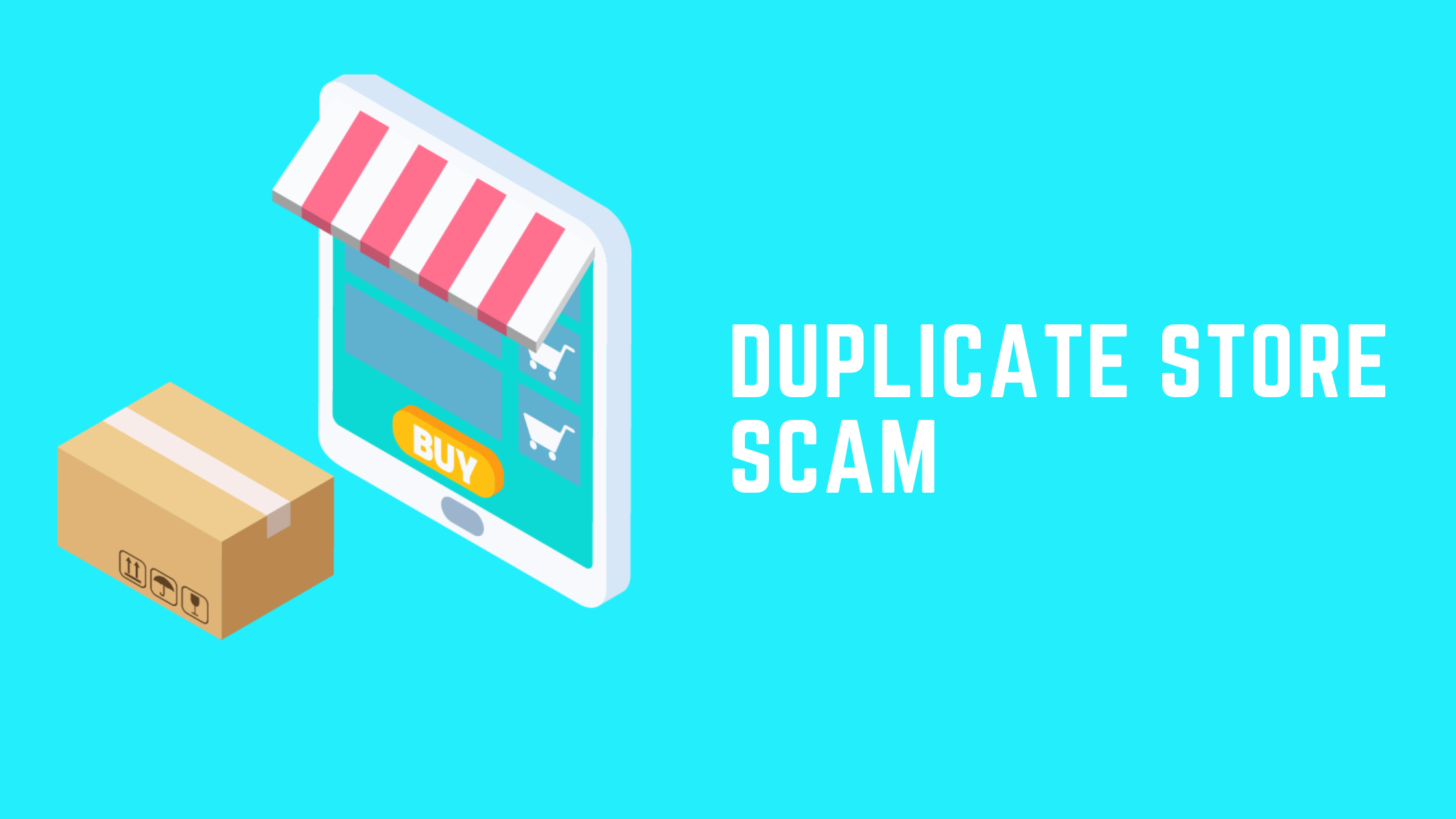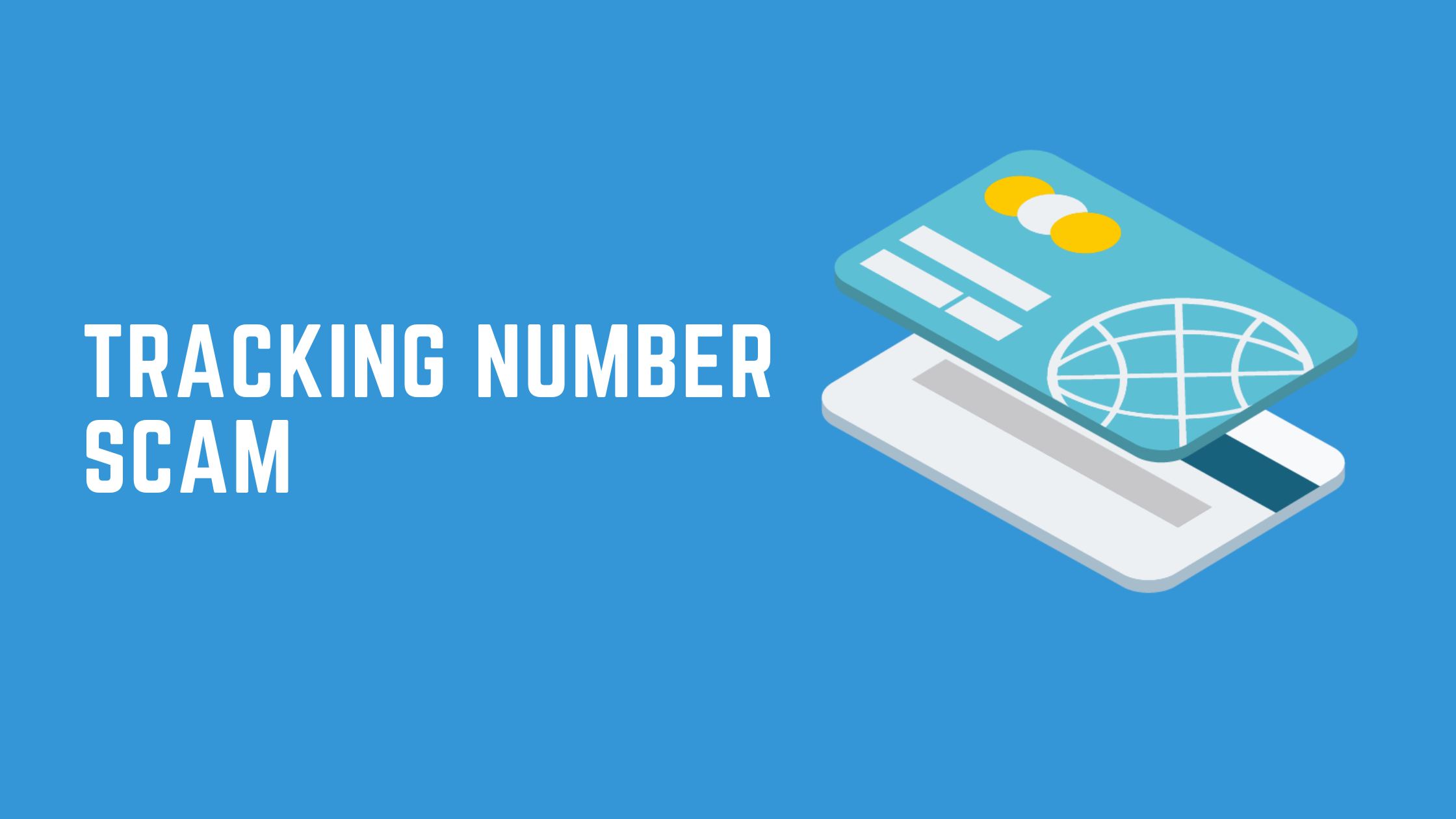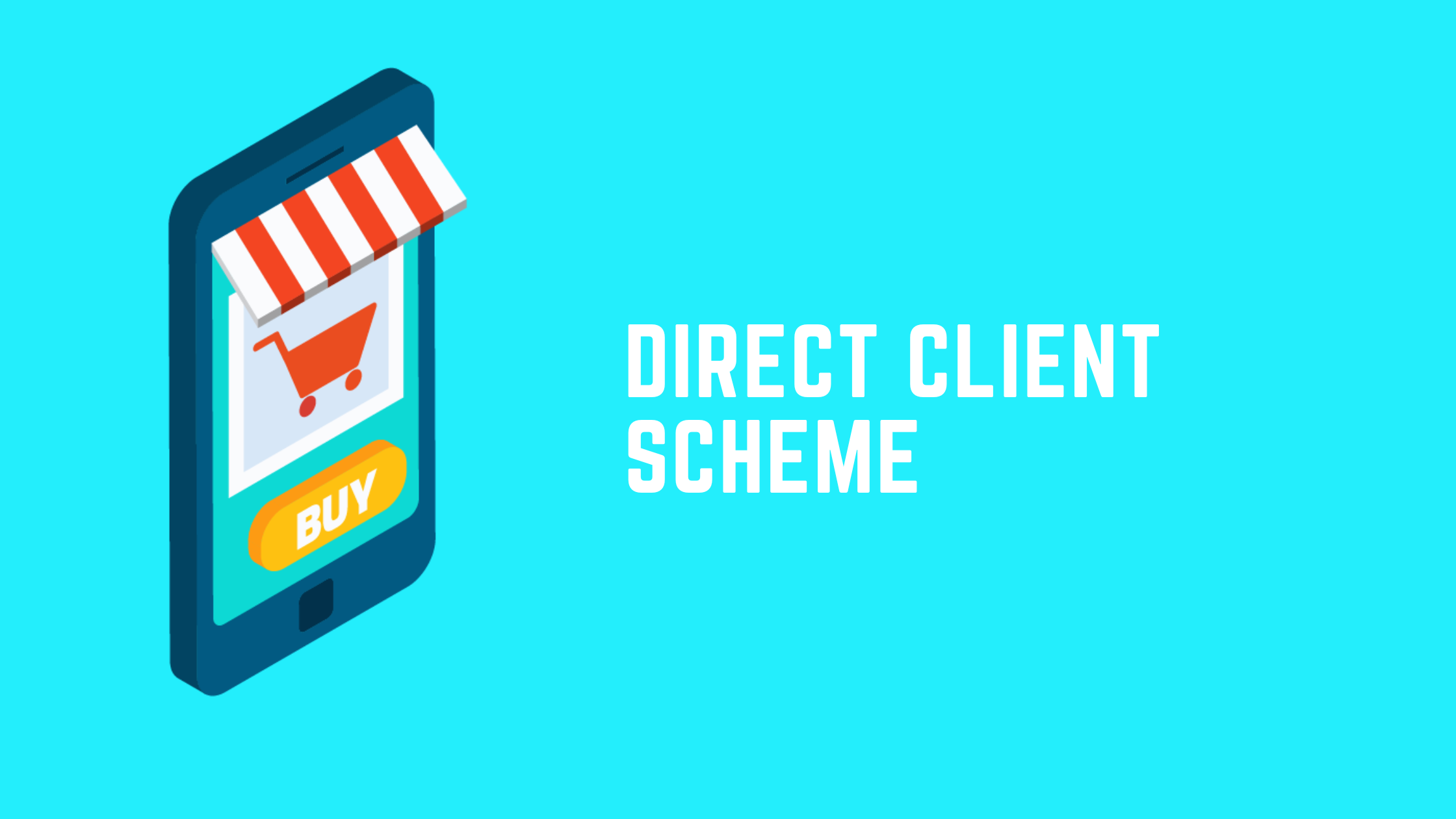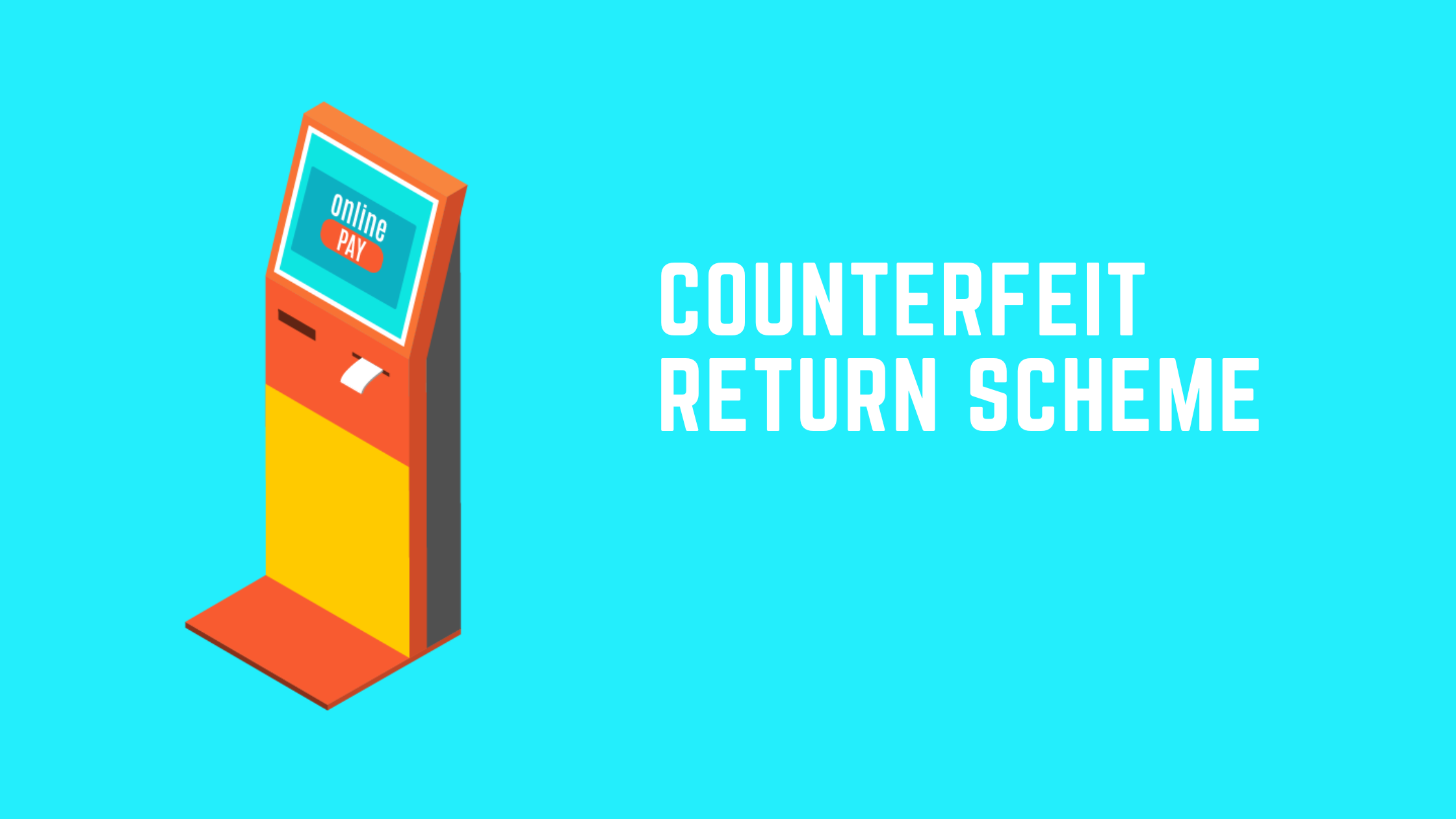Being one of the most popular eCommerce platforms, Shopify is an attractive target for online scammers, especially Shopify scam stores. In this blog, we’ll explore the world of Shopify scams and discuss how to identify them, examples of recent high-profile cases, how Shopify is addressing the issue, and what to do if you’ve been scammed. Through this article, you’ll be better equipped to navigate the world of online shopping and avoid falling prey to Shopify scams.
First things first, you need to understand the definition: Shopify scam stores are online shops that operate on the Shopify platform but use deceptive tactics to trick people into buying fake or low-quality products, stealing their personal information, or taking their money without delivering the promised goods or services.
Table of Contents
7 Common Shopify Scam Stores Recently
Triangulation Scam
Among the myriad of scams, the Triangulation Scam stands out for its complexity and the broad range of potential victims it targets. Let’s dive into understanding this scam first.
General Definition
A triangulation scam happens when there are three parties: the unsuspecting customer, the legitimate third-party seller or supplier, and the scammer, who acts as a middleman. The scam operates as follows:
- The scammers will create a real Shopify store, in which they sell really high-end items at ridiculously low prices.
- After the customer purchases and pays, the scammer will then place an order for the seller or supplier with the customer’s order information but using a different credit card, which most likely is a stolen one.
- The legitimate online store sends the product directly to the unsuspecting buyer, thinking it’s a standard transaction. Meanwhile, the fraudulent seller pockets the money from the original sale.

In essence, these Shopify scam stores cleverly leverage legitimate online platforms and their direct-to-customer shipping processes to move stolen goods, using stolen financial information.
How Shopify Buyers Get Scammed
The customer who buys the product is not really unharmed. The product that customers receive may be counterfeit, of poor quality, or completely different from what they ordered. Below are some additional impacts of these Shopify fake stores on the buyers:
- Receiving poor-quality products: Buyers believe they are purchasing a genuine, high-quality product, but upon receipt, they discover it’s a cheap knockoff or an inferior, poor–quality version of the product.
- Receiving Stolen Goods: Although the buyer has paid for the product, the actual purchase from the Shopify store was made using stolen credit card details, which makes the purchased goods illegal. Thus, the buyer unknowingly becomes the recipient of stolen goods, which can lead to legal complications.
- Overpaying for Products: The fraudulent sellers, in a bid to maximize their gains, might list products at a higher price than they’re available for on legitimate websites. Consequently, buyers end up paying more than they should have.
- Exposure to Further Scams: By making a purchase from these dubious sellers, buyers may unknowingly provide them with personal information. This data can be used or sold for further scams, leading to more profound financial vulnerabilities.
- Potential Complications with Returns: If a buyer decides to return the product, they will direct their request to the fraudulent seller. However, since the item was purchased from a legitimate Shopify store using fraudulent means, processing returns or refunds can become extremely complicated, leaving the buyer at a loss.
If any issues happen with the product, there is no way to contact the Shopify scam stores or the scammer, as they’re untraceable. This scam often occurs in the drop-shipping industry, and it is one of the most profitable scams. That’s because the scammer doesn’t just do this to one seller or supplier, but rather a bundle of them with personal information from hundreds of customers.
How Shopify Sellers Get Scammed
While buyers are often the primary targets in many scams, this particular scheme poses significant threats to Shopify sellers. Let’s delve into understanding how these Shopify scam stores impact those selling on Shopify.
- Financial Loss through Chargebacks: Once the real owner of the stolen credit card detects the unauthorized purchase, they will initiate a chargeback. The Shopify seller, in such cases, not only loses the product and the funds from the sale but might also incur additional fees associated with chargeback processing.
- Reputation Damage: Repeated involvement in such fraudulent transactions, even if unwittingly, can tarnish the reputation of a Shopify store. Negative reviews, chargeback ratios, and rumors can deter potential customers, leading to reduced sales and trust.
- Inventory Discrepancies: Shopify sellers might notice discrepancies in their inventory due to the increased volume of products being shipped but later charged back. This can disrupt stock management, forecasting, and future sales strategies.
- Potential Account Suspensions: If a Shopify store becomes frequently embroiled in these triangulation frauds, payment gateways or even Shopify itself might flag the store for suspicious activity. Repeated flags can lead to temporary holds or even permanent account suspensions.
- Loss of Time and Resources: Dealing with chargebacks, customer complaints, and potential investigations can be time-consuming and mentally taxing for Shopify store owners. The administrative burden of untangling these scams can divert attention from genuine business growth activities.
After being scammed, if the supplier tries to sue, they can’t because the scammer and the Shopify fake stores leave no trace. All the information they got belonged to either the customer or the owner of the stolen credit cards. This can waste so much time and resources of the company to solve all these problems.
Duplicate Store Scheme
General Definition
This is another extremely popular type of Shopify scam stores, and you can easily spot it on many eCommerce platforms. A duplicate store scheme happens when scammers create one or many stores that lookalike or even identical to the original, already well-loved, and often high-end store.

They copy the design, layout, and logo of a legitimate store to make it difficult for customers to detect the scam. The primary aim is to deceive customers into thinking they are shopping from a genuine store, capturing their payment details, or delivering counterfeit or non-existent goods.
How Shopify Buyers Get Scammed
Like the previous scam, these Shopify scam stores will try to sell its products at a fraction of the price as the real ones. But the products will likely be inferior quality, counterfeit, or even nonexistent. Most of the time, the buyers won’t find out about these Shopify fake stores. As its name suggests, this scheme involves the meticulous replication of legitimate online stores to dupe buyers.
- Payment for Phantom Goods: One of the primary ways buyers are scammed is by paying for goods that will never arrive. Drawn in by the convincing facade of the duplicate store, a buyer completes a purchase, only for the scammer to pocket the money and disappear without a trace.
- Counterfeit Deliveries: Sometimes, the deception goes a step further. Instead of vanishing post-purchase, the scammer sends a counterfeit or subpar version of the product. This leaves the buyer not only out of pocket but also in possession of an item that’s a mere shadow of what was advertised.
- The Danger of Data: Every online purchase requires a certain degree of data sharing, from addresses to credit card details. In the hands of scammers, this information becomes a tool for further fraud. By shopping in a duplicate store, buyers unwittingly expose themselves to potential identity theft and other cybercrimes.
- Eroding Trust: Falling victim to the Duplicate Store Scheme can have lasting psychological impacts. Buyers may become wary of online shopping, approaching every purchase with skepticism, even when dealing with legitimate sites.
When buyers do find out, the chance of getting their money back is so little, and not worth their time and effort to go through all the troubles to cash it back. Because these Shopify fake stores are really up-to-date with all the current policies of the platform, while most of the buyers aren’t, they may not even know about the existence of the policies that were made specifically to protect them. Afterward, the scammer may also use the customer’s payment information to commit further acts of scam or fraud.
How Shopify Sellers Get Scammed
This deceptive tactic not only targets unsuspecting buyers but also poses severe repercussions for genuine sellers. We can name multiple impacts of these Shopify scam stores on sellers:
- Brand Dilution and Reputation Damage: When Shopify fake stores duplicate legitimate stores, it sows confusion in the marketplace. Any subpar experiences or fraudulent activities associated with the duplicate can inadvertently smear the genuine store’s reputation, leading to distrust, negative feedback, and reduced customer loyalty.
- Diverted Revenues: An unsuspecting customer might end up purchasing from the counterfeit store, believing it to be genuine. This translates to lost sales for the authentic seller, causing potential significant revenue drops.
- Operational Strains: Genuine Shopify sellers often find themselves addressing complaints and concerns from aggrieved customers who, unbeknownst to them, interacted with the duplicate store. This not only consumes valuable time but also strains resources and distracts from core business operations.
- Legal Complications: If the counterfeit store is selling fake products under the genuine store’s brand, the real seller may inadvertently be pulled into legal disputes. Addressing copyright infringements, brand misuse, and other related issues can be both expensive and time-consuming.
Tracking Number Scheme
General Definition
This scheme is often seen in the PayPal user community, as it’s based on PayPal’s policy of automatically siding with the seller when a tracking number has been submitted for them, no matter whether they are real or fake. This type of Shopify scam stores is also a common scam tactic that some fraudulent sellers use to take advantage of honest buyers.

First, the scammer will provide the buyer with a fake tracking number for a product that they may not even have actually shipped. The buyer will then try to contact the seller, but will likely receive no response. When the buyer files a dispute with PayPal, the scammer will provide the fake tracking number as proof of delivery, causing PayPal to automatically side with the scammer or the Shopify fake stores.
How Shopify Buyers Get Scammed
The Tracking Number Scheme revolves around the provision of a misleading tracking number post-purchase. Scammers employ this tactic to simulate a genuine transaction’s norms, ensuring that the buyer remains oblivious for as long as possible.
- The Illusion of Progress: Once a purchase is made on Shopify, buyers anticipate a tracking number to monitor their order’s journey. When they receive one, even if it’s fraudulent, it instills confidence that their product is on its way. This false sense of security can lead to extended waiting periods, during which the scammer benefits from the delay.
- Tied-Up Funds: Many payment gateways or platforms, including Shopify, have policies to protect both buyers and sellers. Funds might be held until the transaction is deemed complete, which is often gauged by the delivery status linked to the tracking number. A deceptive tracking number can delay the realization of a scam, keeping the buyer’s money tied up.
- Wasted Time and Energy: Buyers can find themselves in a loop of checking the status, reaching out to the supposed seller of the Shopify scam stores for updates, and even contacting shipping carriers, trying to trace a package that doesn’t exist.
- Complicated Dispute Resolution: Once buyers realize they’ve been duped, they might initiate a dispute with their payment provider or Shopify’s customer service. The presence of a tracking number, albeit fraudulent, can complicate matters, making it harder for buyers to prove they never received the product.
How Shopify Sellers Get Scammed
Shopify sellers, in their quest to provide the best service, rely heavily on tracking numbers to keep customers informed. However, this very tool can be turned against them in the hands of crafty scammers.
- Chargebacks and Refunds: A scammer might claim they never received an item, even when the seller has proof of delivery through a tracking number. If the scammer used a stolen tracking number from another legitimate delivery to the same location, it creates an illusion of validity, leading to potential chargebacks.
- Reputation Damage: If a seller is falsely accused of not delivering an item due to a manipulated tracking number, it can result in negative reviews or complaints, eroding the seller’s credibility and trustworthiness.
- Financial Strain: Handling disputes, processing chargebacks, and potential loss of merchandise can impose financial burdens on sellers, affecting their bottom line and overall business health.
Direct Client Scheme
General Definition
Direct Client Scheme (or Off-Platform Sales Scheme) is a quite uncommon scam because it requires the fraudsters to spend time to gain the buyer’s trust, but it’s pretty effective, and the fraudsters can get a lot of money this way. This is a scam that involves some sweet-talking and persuasion skills.

To create a direct client scheme, first, the seller will create legit-looking Shopify fake stores. These stores even have a lot of reviews and 5-star ratings because the scammer will try to make a few genuine transactions where the products are legitimate. Once the trust is established, the seller suggests a purchase through a direct card payment technique to avoid extra costs and the inherent hassle of shopping on Shopify. Trusting the fraudsters, the buyers will give out their card details and other data. With the information, the fraudsters will proceed to exhaust the buyer’s funds. Needless to say, the buyers won’t receive their purchases from the Shopify scam stores.
How Shopify Buyers Get Scammed
Because this is an off-platform purchase, the buyers aren’t under any eCommerce platform’s protection. This makes their card issuers their only hope of getting their money back. Below are some additional potential harms that buyers can take:
- No Platform Protection: By transacting outside of Shopify, buyers forfeit the platform’s protection mechanisms. This means if there’s a dispute or issue, Shopify cannot intervene, assist, or offer any form of redress.
- Payment Frauds: Without the secure payment gateways that Shopify offers, buyers may end up sharing sensitive financial details in less secure environments, leading to potential payment fraud or unauthorized charges.
- Non-Delivery or Counterfeit Goods: With no platform oversight, scammers can easily take payment and never deliver the promised goods. Alternatively, if the Shopify scam stores do send something, it’s often counterfeit or not as described.
- Loss of Recourse: Should the transaction go awry, buyers have limited channels to reclaim their money or report the fraudulent seller, especially when the communication has been taken off-platform.
How Shopify Sellers Get Scammed
Shopify sellers, in their pursuit to grow their client base and sales, can sometimes be lured by the promise of big orders or direct client relationships. This very aspiration can become their vulnerability when faced with the Direct Client Scheme.
- Chargeback Scams: Even after delivering a product, Shopify fake stores, having made payments outside of Shopify, can dispute charges with their credit card companies. Without Shopify’s mediation, sellers might find it challenging to prove the legitimacy of the transaction.
- Phishing Attempts: Scammers, under the guise of direct clients, may send phishing emails or links, attempting to harvest sensitive information, which can then be used maliciously.
- Reputational Risks: If a seller is deceived by a direct client and the transaction sours, word-of-mouth and online reviews can tarnish the seller’s reputation, even if they were initially well-intentioned.
- Loss of Product and Funds: There’s the genuine risk of shipping products to these Shopify fake stores and never receiving payment or facing fraudulent chargebacks.
Viral Products Scam
General Definition
Harnessing the power of virality, the Viral Products Scam cleverly capitalizes on trending items, creating a mirage of irresistible deals, limited-time offers, and exclusive access.

At its core, the Viral Products Scam involves unscrupulous entities promoting trending or viral products at highly discounted rates or with incredible promises. These Shopify scam stores often set up temporary or fake online storefronts to lure in buyers. Once they receive orders (and payments), they either provide counterfeit goods, inferior substitutes, or, in many instances, nothing at all.
How Shopify Buyers Get Scammed
Like the duplicate store scheme, these Shopify scam stores are often very creative in the way they scam people. They will use their creativity to create a viral product, for example, Burrito Blanket, a blanket that’s shaped and colored to look like a giant tortilla wrap. These products not only go viral for their uniqueness, but also the store will try to promote them by creating ads discounts, and other sale tactics to gain as many product sales as possible.
But these scammers don’t really want to create a proper business, they just want to scam people. Because most of the time, these products are new on the market, the customer won’t be suspicious if they haven’t had any reviews or ratings. Just by looking at the product’s images and descriptions, which have been crafted carefully, customers will hope to get a great product at a discounted price. But it’s far from the truth, what they receive are often low-quality products made with cheap materials and usually by underpaid workers. Sometimes, customers even receive nothing. These products also take a lot of time to ship, which reduces the chance of the customer being able to make a refund.
How Shopify Sellers Get Scammed
For Shopify sellers, viral trends present a golden opportunity for sales and visibility. Yet, the Viral Products Scam can also ensnare these sellers, leveraging their desire to stock and sell the latest in-demand items.
- Bulk Purchase Scams: Scammers might pose as wholesalers or distributors offering bulk quantities of the viral product at unbeatable prices. Sellers, hoping to capitalize on the trend, might buy in large volumes, only to receive counterfeit goods or nothing at all.
- Brand Reputation Damage: If a seller unknowingly stocks and sells counterfeit versions of a viral product from the Shopify fake stores, it can severely tarnish their reputation. Unsatisfied customers might leave negative reviews, initiate chargebacks, or even report the seller.
- Financial Losses: Investing in stock based on the promise of a viral trend, only to be duped with inferior products, can lead to significant financial setbacks for sellers. Not only is there the cost of the goods, but potential lost sales from disappointed customers.
- Legal Repercussions: Selling counterfeit or unauthorized versions of products can lead to legal actions from the genuine brand or aggrieved customers, leading to potential lawsuits, fines, or store closures.
Counterfeit Return Scheme
General Definition
This is a very specific eCommerce scam that involves the scammer switching out a legitimate product for a fake or inferior one during the shipping process. The Shopify store may not be a scam store at first, but it could be easily misunderstood as one.

The scam works by the scammer purchasing a legitimate product from an online store, usually an expensive one, and then returning a counterfeit to the store while asking for a refund. This means the scammer not only gets the refund but also gets the high-value product, which these Shopify scam stores can sell for a profit.
How Shopify Buyers Get Scammed
While the Counterfeit Return Scheme predominantly targets sellers, buyers aren’t entirely immune. Unlike the direct effect that Shopify scam stores make, the ripple effects of counterfeit return scams can indirectly impact genuine buyers in various ways.
- Higher Prices: To mitigate the losses from such scams, sellers might increase their product prices, passing the cost on to legitimate buyers.
- Stricter Return Policies: Sellers who’ve been victims of the Counterfeit Return Scheme might adopt more restrictive return policies, making it harder for genuine buyers to return items when needed.
- Delayed Refunds: To prevent scams, sellers might take more time to inspect returned items meticulously before processing refunds, causing delays for honest buyers.
- Mistrust and Verification Hurdles: Buyers might face additional verification steps or even skepticism when making legitimate return requests, as sellers become more cautious.
How Shopify Sellers Get Scammed
This scam will cost the legitimate store a lot of money, from the return shipping fee to the actual cost of the product itself, not to mention the labor cost of inspecting every returned item.
- Financial Losses: At the most basic level, sellers face direct financial losses. They refund the scammer while losing the genuine product to the counterfeit return. This gives the scammer the chance to create Shopify scam stores with the received products.
- Inventory Discrepancies: When counterfeit items are returned, they can mistakenly be added back to inventory. This can lead to unwittingly selling counterfeit goods to other customers.
- Reputation Damage: If a seller doesn’t immediately recognize the counterfeit and mistakenly resells it, they risk damaging their reputation. Unsuspecting buyers receiving these counterfeit goods might leave negative reviews or complaints.
- Increased Operational Costs: Sellers may need to invest in training staff to spot counterfeits or implement advanced verification processes for returns, leading to higher operational expenses.
- Legal and Brand Risks: If a seller inadvertently sells a counterfeit product that was returned to them, they might face legal actions, especially if the fake product from those Shopify fake stores violates intellectual property rights or causes harm.
Fake Purchase Order Scam
General Definition
Similar to the return scheme, this scam involves a proper Shopify store and a scammer. The scammer will try to create a fake purchase order to trick the store into shipping products that will never be paid for.

The scam works by the scammer posing as a buyer and creating a purchase order that appears to be legitimate and from a real company. This purchase order may also include a request for expedited shipping or some other special handling, but this is only to increase the urgency of the transaction. The more urgent the order is, the more careful the store should be.
After receiving the product, the store will realize that they can’t cash out their money due to the fact that the payment was made on a stolen card or other fraudulent methods.
How Shopify Buyers Get Scammed
While the Fake Purchase Order Scam predominantly targets sellers, the consequences often cascade down to the buyer community, impacting their shopping experience and trust in online platforms.
- Overpayment and Refund Tricks: Scammers might send fake POs to buyers, claiming they overpaid for an item, and requesting a refund of the difference. Buyers, believing the document to be genuine, might end up sending money to the scammer.
- Phishing Attempts: These counterfeit POs can be embedded with malicious links, aiming to steal personal information or install malware on the buyer’s device.
- Price Inflation: As sellers deal with losses from fake POs, they might increase product prices, indirectly affecting genuine buyers.
- Distrust in Genuine Communications: As scams proliferate, buyers might start doubting even legitimate communications from sellers, leading to confusion and mistrust.
How Shopify Sellers Get Scammed
For Shopify sellers, the Fake Purchase Order Scam presents a labyrinth of deception, wherein what seems like a business opportunity can quickly turn into a significant setback. And much like the previous scam. This not only costs the store financially but also costs it credibility. Because the scam will try to blame the store in order to gain another product shipment or refund.
- Product Losses: Sellers, believing the PO to be genuine, might ship products to the scammer, only to realize later that the PO was fake and payment will never materialize. The products then can be used to create Shopify fake stores.
- Financial Deception: Some scammers, using fake POs, might claim they’ve made an overpayment and request a refund of the difference. Unwary sellers might end up transferring money, only to find out the initial payment was bogus.
- Reputation Risks: Falling victim to such scams can tarnish a seller’s reputation, especially if other genuine buyers or businesses are involved or affected indirectly.
- Operational Disruptions: Addressing the fallout of a fake PO—be it liaising with banks, handling customer complaints, or dealing with inventory discrepancies—can consume time and resources.
- Data Security Threats: Engaging with fake POs, especially those with embedded malicious links or attachments, can compromise a seller’s digital infrastructure or sensitive data.
And much like the previous scam. This not only costs the store financially but also costs it credibility. Because the scam stores will try to blame the store in order to gain another product shipment or refund.
The Impact of Shopify Scam Stores
The Shopify scam stores can significantly affect many parties, from buyers to legitimate sellers or suppliers, and even the Shopify platform as well.
- Financial losses: Buyers who are victimized by these scam stores may lose money on products they never receive, or sellers and suppliers who are scammed may lose revenue from products they ship without receiving payment. These are significant and can cause a great deal of stress and frustration. eCommerce fraud in the US alone is reported to cost around $20 billion in the year 2021.
- Damage to reputation: For legitimate sellers and Shopify itself, being associated with scam stores is damaging to their reputation. Buyers may be hesitant to do business with them in the future, even if they had no involvement in the scam. This can have long-term implications for the eCommerce industry as a whole. More than that, as a direct result of these Shopify fake stores, eCommerce platforms like Shopify may face increased scrutiny from regulators and consumers, which results in more stringent policies and regulations.
- Legal and regulatory issues: Doing scams means Shopify fake stores are putting themselves in a lot of trouble. They are not only violating Shopify’s terms & conditions but also violating consumer protection laws and regulations. If caught, they could face up to 20 years in prison, depending on the nature and severity of each case.
How to Identify Shopify Scam Stores
For the Regular Shopify Buyer
Although not all scam stores on Shopify are the same, there are a few common traits that consumers can pay attention to when shopping:

- Scam stores may not provide any contact information or may provide fake contact information.
- If an offer on a product seems too favorable, it might be a red flag. Scam stores often lure customers with unbelievable discounts or giveaways to quickly attract attention.
- They may have poorly designed websites with low-quality product images and descriptions that lack professional details or have fake trust badges. Because the more ambiguous the details can be, the more likely they can get away with customers’ hard-earned money.
- Unverified or uncommon payment methods can be used by Shopify scam stores in order to increase their chances of success.
- Shopify fake stores may create a sense of urgency or pressure to act quickly. They can create what seems like a one-of-a-lifetime opportunity that tricks people into creating an order.
- Shopify scam stores may have website URLs that are slightly different from legitimate websites or may use misspelled words. Instead of using a domain name like .com, they could use other domain names to deceive customers.
- A Scam store can have no social media accounts or online presence beyond its own website. When it does have social media, check to see if there are any valid ratings and reviews about its products or services. An invalid review is often an overly positive compliment, followed by a 5-star rating, and it often comes from a new clone account with little to no personal information. It may lack specific details or personal experiences. Invalid reviews are typically posted in batches, so they have similar language or phrasing across multiple reviews.
For the Shopify Seller Conducting B2B Deals
When you’re a seller looking to strike a deal with another business on Shopify, the stakes are high. Here’s how to ensure you’re engaging with a genuine entity:
- If a store offers bulk products or wholesale rates that seem implausibly low, it should raise a red flag. While competitive pricing is expected, extremely low prices can indicate counterfeit goods or an intention to not deliver at all.
- While new stores aren’t inherently suspicious, a store set up recently with a vast inventory, coupled with other red flags, can be cause for caution.
- Authentic B2B sellers usually provide detailed product descriptions, often with original photos. Scam stores might use generic or stolen descriptions and images, lacking details about the product’s origin, brand, or specifications.
- Check the store’s URL. A genuine Shopify store should have an SSL certificate, meaning the website starts with https:// and typically has a padlock symbol. Shopify fake stores usually don’t comply with Internet safety protocols so they may not have that.
- Genuine B2B sellers provide multiple channels for communication, including phone numbers, email addresses, and physical addresses. Be wary of stores with only a contact form and no other means of direct communication because their chance of being Shopify scam stores is high.
- An authentic B2B storefront will likely have reviews from other businesses. While it’s natural for a store to highlight positive reviews, be cautious if all reviews are glowing without any constructive feedback or if there are no reviews at all.
- From the logo to the website design, inconsistent branding can be a telltale sign. Genuine businesses usually maintain a consistent brand image throughout their storefront.
- A genuine B2B seller on Shopify would have clear return and refund policies, given the bulk nature of purchases. Vague or non-existent policies can be a red flag.
How Shopify is Addressing Shopify Scam Stores
Shopify has several policies in place to address and prevent scam stores on its platform. These policies include:
- Verification: Shopify verifies the identity and contact information of all merchants before allowing them to set up a store to prevent any Shopify fake stores.
- Fraud analysis: Shopify uses AI-powered fraud analysis tools and technologies to detect and prevent fraudulent activities on its platform.
- Prohibited products: Shopify prohibits the sale of certain products, such as counterfeit goods, illegal drugs, and weapons.
- Reporting system: Shopify has a system in place for reporting fraudulent activities and scam stores on its platform.

If a merchant is marked as spam, Shopify will take various actions against scam stores on its platform. Shopify has shut down thousands of scam stores on its platform and permanently banned many sellers that are related. Furthermore, Shopify also has taken legal action against scam stores that violate its policies or engage in illegal activities.
These policies and actions have been effective in addressing and preventing scam stores on Shopify. The company has a strong commitment to providing a safe and trustworthy eCommerce environment for its users. It promises to continue to develop new technologies and policies to improve its fraud prevention measures and provide an even safer platform for eCommerce transactions.
Safeguarding Practices: How to Protect Yourself from Shopify Scams
As safe as it sounds, as with any platform, there is always a risk of fraudulent activities and scam stores. Buyers and legitimate sellers need to remain vigilant and report any suspicious activities to help prevent scams from happening.
Steps to Take if You’ve Been a Victim of a Scam Store
For Regular Shopify Buyers
If a scam has happened to you, there are a few extra steps you could use to protect yourself and potentially recover your money.
- Credit card and debit card’s chargeback feature: If you use a credit or debit card to make the payment for PayPal, you can use the card’s chargeback, this has been proven by many users as being your best bet to get your money back from the Shopify scam stores. But this should also be your last resort because doing so means you could get blocked or even marked as a scam on PayPal’s system.
- Recheck for miscommunication: Before that, you could try to contact the seller directly and ask for a legitimate tracking number or a refund. Maybe there is a miscommunication somewhere along the way.
- File a dispute to reclaim your payment: When the seller refuses, you have more proof to file another dispute or a claim. This allows a payment gateway representative to review the case and make a final decision. You should include screenshots of communications you’ve had with the seller, a copy of the fake tracking number, and any other evidence that supports your claim.
- Report to Shopify: Alert Shopify about the fraudulent store. Shopify takes such reports seriously and will investigate the issue. Remember to use their official channels to submit a detailed complaint about Shopify fake stores.
- Report to authorities: Finally, you should also consider reporting the scammer to PayPal and any relevant local authorities, such as the Internet Crime Complaint Center (IC3), Federal Trade Commission (FTC), and the Better Business Bureau (BBB).
- Leave a Review or Testimonial: To warn other potential buyers, consider leaving a review detailing your experience, but be factual and avoid overly emotional language. You can use platforms like Trustpilot, Better Business Bureau, or even social media to spread awareness about the Shopify scam stores.
For Shopify Sellers Conducting B2B Deals
As a Shopify seller conducting B2B deals, falling victim to a scam store can be disheartening and financially damaging, but knowing how to react and protect oneself is vital. Here’s a step-by-step guide to help you navigate the aftermath of being scammed and fortify your defenses against potential future threats.
- Initiate Direct Communication: When suspecting foul play in a B2B transaction on Shopify, begin by directly contacting the other business. Given the complexities of B2B deals, it’s possible that delays or misunderstandings could be misconstrued as scams. Reaching out can often resolve issues without further escalation.
- Compile Comprehensive Documentation: Document every facet of the transaction: conversations, invoices, purchase orders, and any other relevant correspondence. Detailed records are essential, especially in B2B dealings, as they can serve as proof in potential disputes or investigations of the Shopify fake stores.
- Alert Your Financial Institution: If you’re convinced that you’ve fallen victim to a scam, promptly inform your bank or credit institution. Given the typically larger sums involved in B2B transactions, they can guide you on how best to dispute the transaction or even halt payments if necessary.
- Report to Shopify and Relevant B2B Platforms: Besides alerting Shopify about potential scams on their platform, consider reporting the fraudulent entity on other B2B platforms or forums. This can help other businesses to be cautious and can sometimes lead to community-driven solutions to prevent those Shopify scam stores.
- Seek Legal Counsel: B2B scams often involve substantial amounts and contractual obligations. Engaging legal counsel can provide clarity on your rights, potential remedies, and guidance on any contractual nuances that may be leveraged.
- Strengthen Internal Safeguards: Post an unfortunate incident, review and bolster your business’s internal protocols. This could mean enhancing vetting procedures for potential B2B partners, tightening cybersecurity measures, or instituting more rigorous checks and balances for transactions.
Preventions for Future Scams
Essential Tips for Regular Shopify Buyers
Customers can follow this recommendation to prevent being scammed by Shopify scam stores:
- Research Before Purchasing: Before making any purchase, spend a few minutes researching the store. Look for customer reviews, ratings, and any previous complaints. A simple Google search with the store’s name followed by reviews or complaints can reveal a lot.
- Examine Product Details and Images: Genuine sellers typically offer detailed product descriptions and high-quality images. If a product lacks detailed specifications or if the images seem to be generic stock photos, exercise caution.
- Check for Secure Payment Gateways: Ensure that the Shopify store supports secure payment methods. Before entering payment details, confirm that the website’s URL starts with https://, signifying that it’s a secure, encrypted connection.
- Be Wary of Too-Good-To-Be-True Deals: While everyone loves a good deal, extremely low prices can sometimes be a red flag. If a price seems unbelievably low, it might be a bait tactic employed by scam stores.
- Avoid Sharing Unnecessary Personal Information: Shop only on sites that request relevant information during checkout. If a store is asking for additional personal data that doesn’t pertain to the purchase, think twice.
- Use Credit Card Over Debit: If possible, use a credit card for online purchases. Credit cards generally offer better protection against fraud compared to debit cards. In the case of a scam, disputing a credit card charge is often more straightforward.
- Familiarize Yourself with Return and Refund Policies: Before buying, understand the store’s return and refund policies. Shopify scam stores often have very vague or overly restrictive policies, which can be a warning sign.
- Ensure Transparent Seller Communication: Legitimate sellers typically have clear channels of communication. Before making substantial purchases, test the responsiveness of the seller by sending an inquiry or a pre-sales question.
- Regularly Monitor Account Statements: Keep a vigilant eye on your bank and credit card statements. Immediate recognition of any unauthorized transactions can prevent further potential losses.
Essential Guidance for Shopify Sellers in B2B Transactions
Shopify sellers in B2B transactions can follow these guidelines to avoid potential scams in the future:
- Due Diligence on Business Partners: Before entering into any B2B transaction, conduct a comprehensive background check on the potential business partner. This includes verifying their business registration, reading reviews, and seeking feedback from other businesses that have transacted with them.
- Use Secure Payment Channels: For sizable B2B transactions, utilize reputable payment gateways that offer fraud protection. Avoid wire transfers or non-standard payment methods unless you have a longstanding and trustful relationship with the business partner. If they can’t provide secure payment channels, it’s best to not do business with them cause the chance of them being Shopify fake stores is really high.
- Implement a Strong Contractual Framework: Always have a detailed and clear contract in place. This document should outline the terms of the transaction, delivery expectations, dispute resolution mechanisms, and any other pertinent details. A well-structured contract can deter scam attempts and provide legal recourse if needed.
- Maintain Regular Communication: Consistent and open communication lines can prevent misunderstandings and foster trust. Schedule regular updates or check-ins, especially for long-term B2B deals, to ensure both parties are aligned.
- Use a Verified Escrow Service: For high-value transactions, consider using an escrow service. This ensures that funds are released only when both parties have fulfilled their end of the agreement, reducing the risk of scams.
- Invest in Cybersecurity: Ensure that your business systems are protected against breaches. A strong cybersecurity framework, including regular system audits, can prevent unauthorized access and safeguard sensitive transactional information.
- Stay Updated on Scam Tactics: Scammers constantly evolve their tactics. By joining industry forums, attending webinars, or subscribing to B2B scam alerts, you can stay ahead of emerging scam techniques and be better prepared to identify red flags.
- Establish a Whistleblower Policy: Encourage employees and partners to speak up if they notice anything suspicious. By having a structured whistleblower policy, you can tap into the collective vigilance of your team.
- Maintain Comprehensive Records: Document every step of your B2B transactions, from initial communications to final deliveries. Detailed records not only deter potential scammers but also provide a clear trail if any disputes arise, protect you from those Shopify scam stores.
- Engage in Peer Collaboration: Regularly collaborate and engage with peers in your industry. Sharing experiences and insights can provide valuable information on potential scammers or dubious business practices.
In conclusion,
While Shopify and other platforms are trying their best to spot and ban Shopify scam stores, it is your responsibility to be informed and protect yourself against any fraud.
To know more about scams on Shopify and how to differentiate yourself from those stores, contact us. We have a team of experts and elite Shopify website development services that you can discover. For more insightful updates from us, please subscribe to our newsletter right below to stay up-to-date with the newest articles from Magenest.











